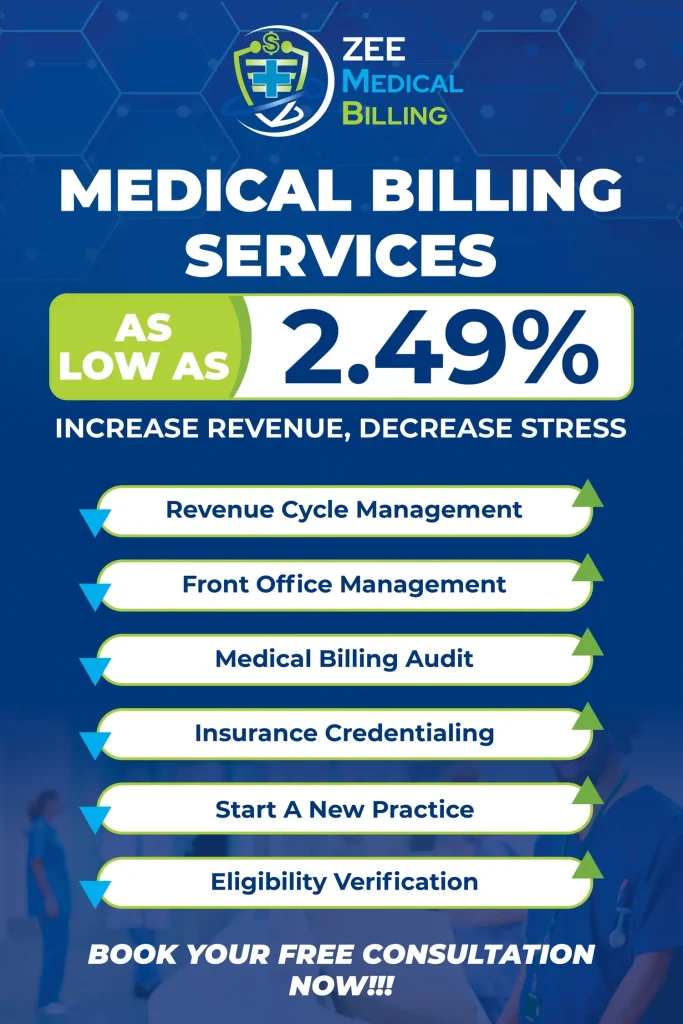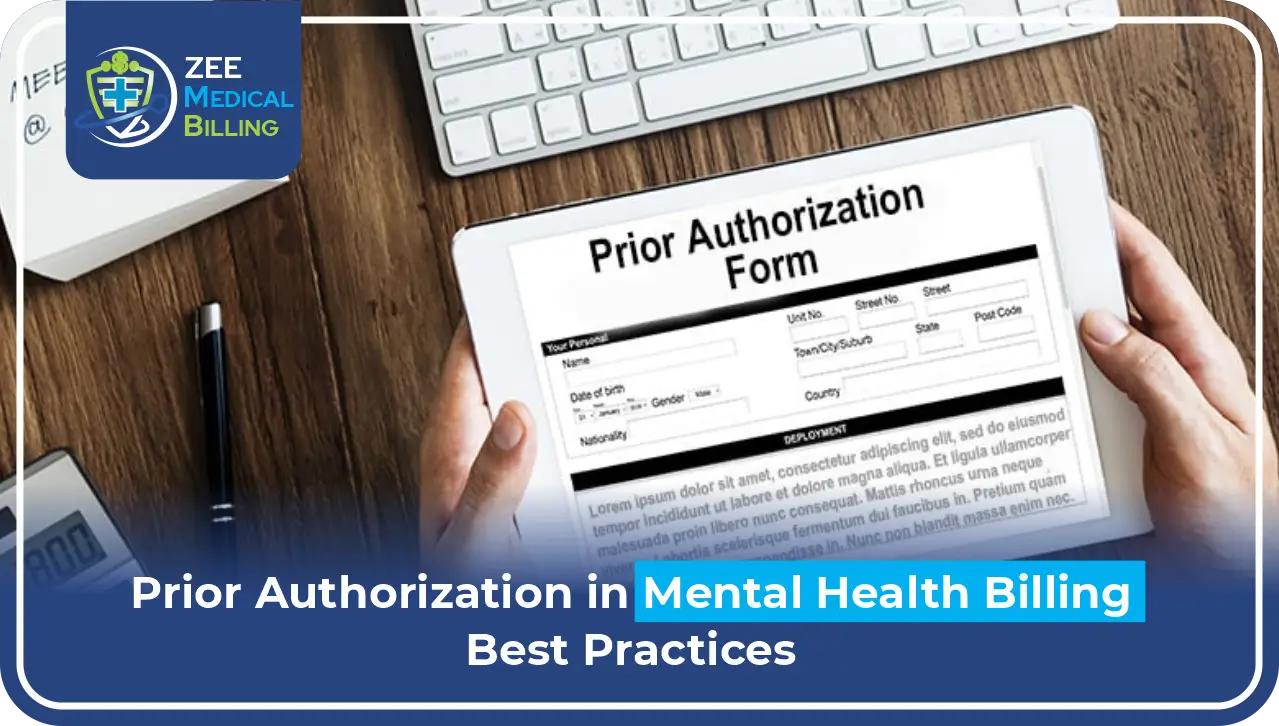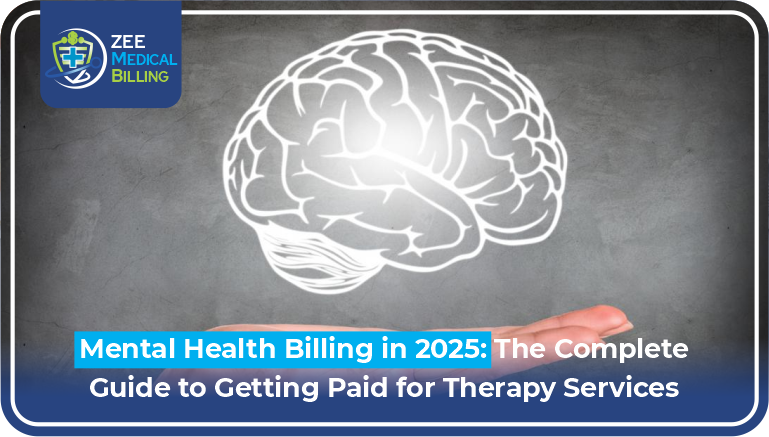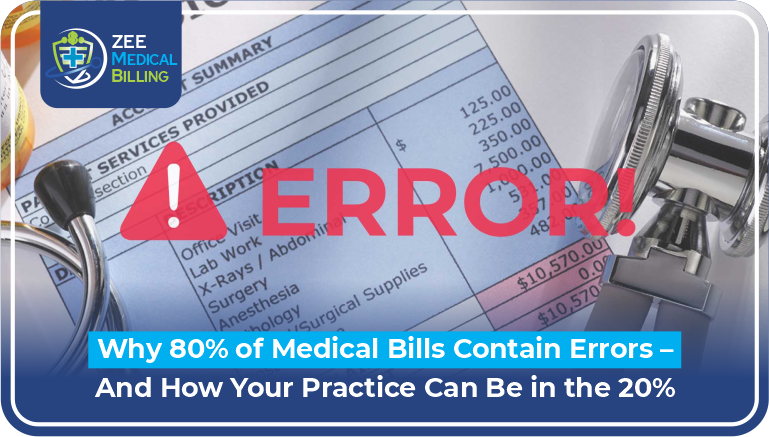Urgent care centers give basic services to patients requiring prompt therapeutic consideration, but billing errors can lead to budgetary losses, understanding dissatisfaction, and compliance issues. Understanding common charging mistakes and implementing methodologies to maintain a strategic distance from them is essential for keeping up an effective urgent care practice. This article investigates the most frequent billing mistakes in urgent care settings and offers practical prevention arrangements.
1. Incorrect Patient Information
The Mistake
One of the most common billing mistakes happens when patient data is incorrectly recorded. This incorporates off-base names, dates of birth, protection details, or contact data. Such errors can lead to claim denials, delayed installments, or billing the wrong patient.
How to Avoid?
- Implement Robust Check-In Methods: Prepare front desk staff to confirm persistent data at each visit. Utilize electronic health record (EHR) systems with prompts to affirm details like insurance ID numbers and demographics.
- Use Automated Verification Devices: Contribute to software that cross-checks persistent information with protective databases in real-time to capture discrepancies early.
- Patient Portals: Empower patients to update their data through secure online entries before arrangements, decreasing mistakes during check-in.
Read More: ZMB Urgent Care Billing: Pick Wisely or Pay the Price
2. Coding Errors
The Mistake
Incorrect medical coding, such as using obsolete codes, misclassifying procedures, or coming up short of recording the medical need of a benefit, is a driving cause of claim refusals. For example, utilizing an incorrect Current Procedural Terminology (CPT) code or the International Classification of Diseases (ICD-10) code can result in rejected claims.
How to Avoid It?
- Hire Certified Coders: Utilize or consult with certified therapeutic coders who are prepared in the latest coding benchmarks, counting CPT, ICD-10, and the Healthcare Common Procedure Coding System (HCPCS).
- Regular Training: Conduct continuous training for suppliers and billing staff on coding upgrades, particularly for common urgent care methods like wound care, break management, or diagnostic testing.
- Audit Charts Routinely: Perform internal reviews to distinguish coding mistakes before claims are submitted. Use coding computer programs with built-in mistake checks to hail potential issues.
3. Failure to Verify Insurance Coverage
The Mistake
Failing to confirm a patient’s insurance scope before giving services can result in non-covered services being charged, driving to denials, or unexpected understanding costs. This is especially common in urgent care, where patients may display terminated or inert protection plans.
How to Avoid It?
- Pre-Visit Confirmation: Prepare staff to confirm insurance qualification at the time of arrangement planning or check-in. Utilize electronic tools to check coverage in real time.
- Clear Communication: Inform patients of their scope status and any potential out-of-pocket costs sometimes recent treatment. Give written estimates for non-covered services.
- Backup Plans: For patients with no coverage, offer self-pay options or payment plans to guarantee services are available while minimizing financial chance for the practice.
4. Upcoding or Under coding
The Mistake
Upcoding (billing for a more costly service than given) or under-coding (billing for a less costly benefit than given) can lead to compliance issues or lost income. Upcoding may trigger audits or accusations of fraud, whereas under-coding comes about in underpayment for services rendered.
How to Avoid It?
- Detailed Documentation: Guarantee providers document all administrations accurately, counting the complexity of the visit, to back the chosen code. For example, a level 4 assessment and management (E/M) code requires detailed documentation of medical decision-making.
- Coding Rules: Follow the American Medical Association (AMA) and Centers for Medicare & Medicaid Services (CMS) rules for E/M coding to avoid discrepancies.
- Regular Reviews: Conduct periodic coding reviews to distinguish patterns of upcoding or undercoding and give feedback to providers.
5. Lost or Incomplete Documentation
The Mistake
Incomplete or lost documentation is a visit issue in urgent care due to the fast-paced environment. Without proper documentation, claims may be denied for the need of medical need or insufficient proof of administration provided.
How to Avoid It?
- Standardized Layouts: Use EHR layouts tailored to common urgent care methods to guarantee consistent documentation. Incorporate areas for history, physical exam, therapeutic decision-making, and procedures.
- Provider Training: Teach suppliers the significance of thorough documentation, emphasizing that “if it’s not recorded, it didn’t happen.”
- Real-Time Charting: Energize suppliers to total documentation during or quickly after patient experiences to avoid omissions.
6. Billing for Non-Covered Services
The Mistake
Billing insurance for administrations not secured by a patient’s plan, such as cosmetic strategies or certain diagnostic tests, can lead to claim denials and persistent frustration. Urgent care centers may inadvertently charge administrations without affirming coverage.
How to Avoid It?
- Know Common Exclusions: Prepare to charge staff on common non-covered administrations for major insurance plans, such as scheduled physical or test treatments.
- Advance Beneficiary Notice (ABN): For Medicare patients, give an ABN before performing non-covered administrations, educating patients about their financial responsibility.
- Transparent Communication: Examine potential non-covered administrations with patients upfront and offer elective arrangements or self-pay options.
7. Copy Billing
The Mistake
Duplicate billing happens when the same benefit is charged numerous times, either due to clerical mistakes or resubmitting claims without correcting fundamental issues. This can lead to overpayments, quiet complaints, or allegations of fraud.
How to Avoid It?
- Claim Tracking Systems: Use a billing program that flags copy claims before submission. Guaranteeing each claim has a one-of-a-kind identifier.
- Reconciliation Processes: Frequently accommodate payments with claims to recognize and adjust copy entries promptly.
- Staff Preparing: Teach charging staff about legitimate accommodation conventions to avoid accidental duplicates.
8. Failure to Follow Up on Denied Claims
The Mistake
Many pressing care centers fail to take up on denied or rejected claims, resulting in misplaced income. Denials may happen due to coding mistakes, lost documentation, or qualification issues, but they are frequently resolvable with legitimate action.
How to Avoid It?
- Dedicated Denial Management Group: Assign staff to audit and offer denied claims promptly. Track denial reasons to distinguish recurring issues.
- Appeal Timely: Follow payer-specific guidelines for engaging denials, ensuring all required documentation is included.
- Analyze Trends: Use denial information to address root causes, such as coding mistakes or verification slips, through preparing improvements.
Read More: Understanding the Significance of Urgent Care Billing
9. Inadequate Patient Communication
The Mistake
Poor communication in almost all charging processes can lead to understanding confusion, unpaid equalizations, and dissatisfaction. Patients may get unexpected bills or need clarity approximately their financial responsibilities.
How to Avoid It?
- Transparent Billing Arrangements: Give patients clear, composed data approximately billing forms, protection scope, and installment choices at check-in.
- Follow-Up Communication: Send updates for outstanding balances through e-mail, content, or phone, advertising adaptable payment plans if needed.
- Patient Instruction: Prepare staff to explain bills and reply to questions empathetically, fostering belief and lessening disputes.
10. Lack of Compliance with Regulations
The Mistake
Non-compliance with healthcare directions, such as the Health Protections Portability and Responsibility Act (HIPAA) or CMS charging rules, can result in fines, reviews, or reputational damage. Urgent care centers may accidentally violate rules due to need awareness.
How to Avoid It?
- Compliance Training: Conduct normal preparation on HIPAA, CMS, and other pertinent controls for all staff, counting billing and clinical teams.
- Appoint a Compliance Officer: Assign a staff part to oversee compliance, screen regulatory upgrades, and actualize vital changes.
- External Audits: Periodically enlist third-party inspectors to survey billing homes and guarantee adherence to government and state guidelines.
Conclusion
Billing mistakes in urgent care centers can have noteworthy financial and operational consequences, but they are preventable with proactive measures. By executing robust confirmation forms, contributing to staff training, leveraging innovation, and keeping up clear communication with patients, urgent care practices can minimize errors and improve income cycle administration. Normal audits and compliance checks guarantee that billing forms adjust with industry standards, fostering belief and productivity in patient care.
Need Expert Medical Billing Services?
Zee Medical Billing provides professional billing solutions tailored to healthcare providers across the United States. In addition to offering top-tier support from our main office, we proudly serve clients in Illinois, Indiana, California, Kentucky, New York, Washington, Georgia, Alabama, South Carolina, Texas, Pennsylvania, Ohio, New Hampshire, Nevada, Massachusetts, Hawaii, Arizona, and Colorado! Whether you’re looking to streamline your revenue cycle or improve claims accuracy, you can reach out to us to learn more about how we can support your practice.









